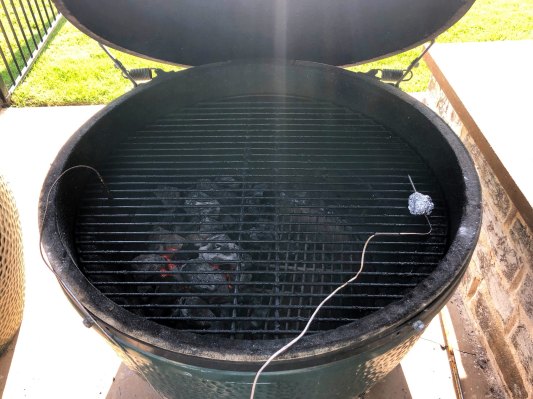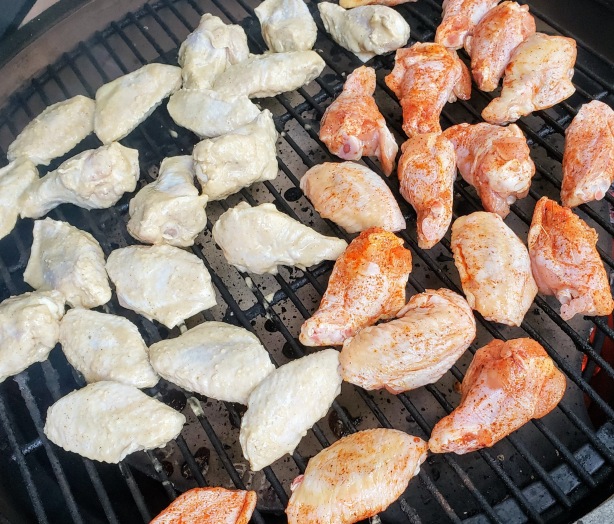Ever burned your meat because the coals are too hot? Tired of standing by your grill, constantly shifting your food to avoid a burnt exterior and raw interior (see pic below)?

The solution: understanding indirect vs direct cooking. This simple concept fulfills Pitmaster Neghae’s MIME criteria (Maximum Impact, Minimum Effort). In it’s simplest form, it involves arranging coal on only one half side of the grill, creating an indirect zone (convection heat) and a direct zone (radiant heat). See diagram below.

To get more technical: indirect cooking refers to food being placed away from the heat source (or a barrier is used) to shield the food from direct exposure to the heat source. It’s incredibly easy: on most grills, just push the charcoals to one side. Indirect cooking is especially good for anything that cooks at low temperatures and takes a long time (“low and slow”): brisket, chicken wings or thighs or legs, whole chicken, whole turkey, and rib roasts.
In contrast, direct cooking refers to food being placed directly over the food source (see pic below). Direct cooking is good for anything that cooks hot and fast – steaks and thin cuts of chicken, for example.
A great pitmaster often combines these two techniques. For example, I have cooked just about every chicken dish on this blog by first placing the meat on the direct side (creating a sear) for 5-15 minutes per side and then moving to the indirect side (cooking the inside slowly until the chicken is well-done at 165 degrees). Because the meat won’t be exposed directly to the coals for the entire cook, I don’t have to constantly watch which pieces are getting burned and move them to different areas. I
Benefits of indirect cooking:
- gently heating food, slow roasting it and keeping it juicy and tender instead of tough and dry .
- simultaneously cook foods that require different exposure to heat (e.g. lobster in the indirect zone and asparagus in the direct zone)
- a holding zone. For example, when directly searing thick steaks, they may not get to the desired temperature before burning the outside surface. Move them to the indirect side and let them slowly get up to temp. Or alternatively, use the reverse sear.
- adding smokey flavor. Wood chunks or chips can be added to the coal, creating smoke that circulates around the indirect zone and permeates whatever’s cooking.
What’s the temperature difference in direct vs indirect zones? Neghae set up temperature probes to answer this questions (see pics below). From his data, the indirect side is always about 100 degrees lower in temperature than the direct side.



Setting up the grill/smoker. Above are examples of the simplest form of indirect and direct cooking: simply putting charcoal on one half of the grill. There’s plenty other ways too, often dependent on the type of grill being used. Before I had a Big Green Egg, I used the snake method to smoke brisket on a Weber kettle. For Kamado-style grills (Big Green Egg, Kamado Joe, etc), indirect cooking is often accomplished with a barrier like a plate setter.


sed expedita voluptatum voluptatum sunt pariatur modi est non dolorum ut quisquam molestiae eos excepturi. quam modi minus molestias ea sit numquam molestias quidem maxime nam sit quis vel quia optio
ut iure quia modi recusandae quas qui reprehenderit officia natus ipsum nihil dignissimos mollitia porro. ullam perferendis vero veniam molestiae eius est excepturi vel odio sequi aliquam a rerum quo
vitae error eum temporibus. nihil ut officia nisi eos. recusandae nobis quam et fugiat et possimus officia. at exercitationem et est reiciendis ipsa voluptatibus voluptatibus cupiditate aliquam sit qu
Leave a comment